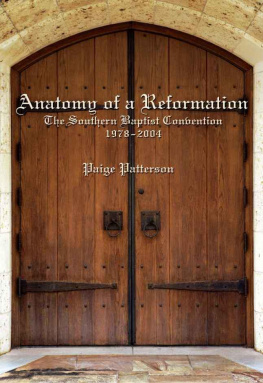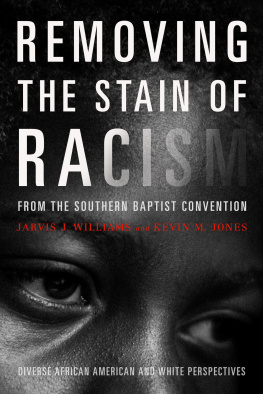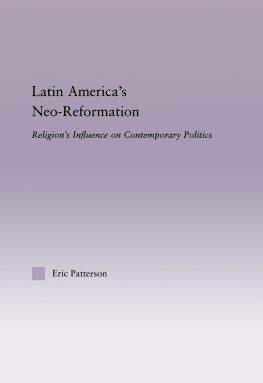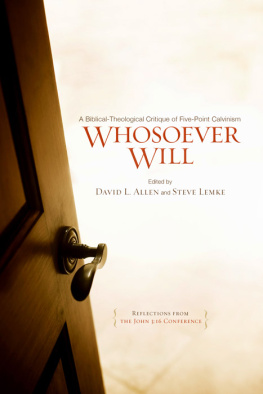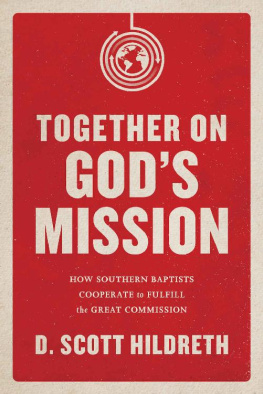Paige Patterson - Anatomy of a Reformation: The Southern Baptist Convention 1978-2004
Here you can read online Paige Patterson - Anatomy of a Reformation: The Southern Baptist Convention 1978-2004 full text of the book (entire story) in english for free. Download pdf and epub, get meaning, cover and reviews about this ebook. year: 2011, publisher: Seminary Hill Press, genre: Religion. Description of the work, (preface) as well as reviews are available. Best literature library LitArk.com created for fans of good reading and offers a wide selection of genres:
Romance novel
Science fiction
Adventure
Detective
Science
History
Home and family
Prose
Art
Politics
Computer
Non-fiction
Religion
Business
Children
Humor
Choose a favorite category and find really read worthwhile books. Enjoy immersion in the world of imagination, feel the emotions of the characters or learn something new for yourself, make an fascinating discovery.
- Book:Anatomy of a Reformation: The Southern Baptist Convention 1978-2004
- Author:
- Publisher:Seminary Hill Press
- Genre:
- Year:2011
- Rating:4 / 5
- Favourites:Add to favourites
- Your mark:
- 80
- 1
- 2
- 3
- 4
- 5
Anatomy of a Reformation: The Southern Baptist Convention 1978-2004: summary, description and annotation
We offer to read an annotation, description, summary or preface (depends on what the author of the book "Anatomy of a Reformation: The Southern Baptist Convention 1978-2004" wrote himself). If you haven't found the necessary information about the book — write in the comments, we will try to find it.
Anatomy of a Reformation: The Southern Baptist Convention 1978-2004 — read online for free the complete book (whole text) full work
Below is the text of the book, divided by pages. System saving the place of the last page read, allows you to conveniently read the book "Anatomy of a Reformation: The Southern Baptist Convention 1978-2004" online for free, without having to search again every time where you left off. Put a bookmark, and you can go to the page where you finished reading at any time.
Font size:
Interval:
Bookmark:
Why would anyone want to live anywhere close to the San Andreas Fault? Millions choose to do precisely that, and they apparently lead reasonably normal lives. Perhaps the Baptist kingdom of our evangelical Zion is the San Andreas Fault of Christendom. Given the constant rumbles, frequent tremors, and occasional 10-point Richter scale seismic earth shifts, some observant evangelicals probably wonder why anyone would want to live among the rowdy Baptists. Others are curious as to why this phenomenon of confrontation in Baptist life seems to erupt with the regularity of Old Faithful.
One of the earliest tremors leading to the massive upheavals of the decade of the 1980s was the publication of an article entitled, "Death In the Pot," which appeared in various state Baptist papers in October 1961. K. Owen White, then pastor of the First Baptist Church of Houston, Texas, and president-elect of the Southern Baptist Convention in 1963, used the incident from the life of Elisha recorded in 2 Kings 4:38-41 to suggest that a noxious herb had been introduced into the Southern Baptist stew. His immediate target was professor Ralph Elliott at Midwestern Baptist Theological Seminary and his book, The Message of Genesis. Elliott's book, publishein 1961 by Broadman Press, the publishing arm of the Southern Baptist Convention, had employed historical-critical assumptions, conclusions, and methodologies, which led the professor to question the historicity of some of the narrative portions of Genesis.
If White's immediate target was the work of Elliot, his article was received enthusiastically by many Baptists in Waxahachie, Texas; Yazoo City, Mississippi; Soddy Daisy, Tennessee; Lizard Lick, North Carolina; and hundreds of other towns. Its ramifications extended to feature the entire superstructure of Southern Baptist Convention denominational institutions and agencies as a seething, noxious pot for which no healing pinch of flour from a prophet's hand had been forthcoming. This perception included two general features: a general distrust for the pot itself (the bureaucracy) and the suspicion that someone had visited Deutschland and returned with a "Tubingen gourd" and poisoned the life-giving gospel stew that the pot was supposed to be warming.
This grassroots Baptist response was in stark contrast to the responses to White's concerns heard by a 19-year-old freshman Bible major at a stateoperated Baptist university in West Texas. Instead, the reaction from those on the faculty who sallied forth to battle, as remembered by the writer of this booklet, was essentially as follows. First, educated and intelligent people virtually all had arrived at similar conclusions with Elliott. Second, 2 in any event, if there were minor shifts away from orthodoxy, "the convention" (which in actuality was "the bureaucracy") would make the necessary corrections. Third, having accepted the first two premises, the average Southern Baptist should trust the system, remain silent, and give his tithea hefty portion of which would be passed along through the Cooperative Program lifeline to continue funding the bureaucracy.
J. B. Gambrell, known as the "great commoner," served as president of the Southern Baptist Convention from 1917 to 1920. Sagely he had observed that, "Baptists never ride a horse without a bridle." This expression was Gambrell's folksy way of focusing on the fierce autonomy of every entity in Southern Baptist life. Believers are priests before God who voluntarily associate with a church comprised of similarly committed saints. Churches are autonomous, voluntarily associating with other churches in local associations, state fellowships (conventions), and a national fellowship (the Southern Baptist Convention). None of these fellowships has any organic connection to the other. In fact, Baptists fear "connectionalism" the way medieval society feared the plague. Gambrell's observation was intended to caution any entity spawned by the churches that it was not to see itself as a wild stallion roaming the Red Desert Basin of Wyoming but rather as a domestic quarter horse carefully bred to work for the churches. Agencies and institutions were bridled with a bit in their mouths and a saddle cinched tight. If they worked well and served the churches, they would eat well from the Cooperative Program trough. But Baptists would never mount up without the reins in their hands.
But the decades of the 1950s and 1960s were heady times for denominational bureaucrats. The successful campaign for "A Million More in '54" and other programmatic victories subtly shifted the focus of denominational life from substance to method. "Tiptoe through the tithers" became the silent refrain of denominational leaders. They developed skills at defusing potentially explosive situations through statesmanship where possible, but buy-outs, intimidations, and humiliations were not uncommon. Like practiced matadors, denominational executives and institutional presidents deftly eluded every bullish charge and slaughtered not a few of the angry convention bovines in the process. They were, so it seemed to themand to everyone elseinvincible.
In 1967, Houston attorney Paul Pressler visited the campus of New Orleans Baptist Theological Seminary. Pressler, an advocate of the value of education, had joined other concerned Houston business leaders in establishing a scholarship fund to assist conservative students who needed support to continue in school. Interestingly, only New Orleans Baptist Theological Seminary, presided over by conservative Leo Eddleman, showed any interest in receiving funds or assisting such students. Pressler came to the campus to interview prospective recipients. During his visit we met over coffee and beignets at the famous Caf du Monde to discuss the current state of affairs in the convention and its seminaries.
As the evening wore on, several convictions that were repeatedly confirmed across the years began to take shape. First, a large number of Southern Baptists were skeptical about many of the leaders in the denomination. Second, Baptist ecclesiastical polity made possible a popular movement to correct errant trajectories. Third, many such efforts had been attempted but had uniformly failed because they were launched either by little-known leaders or else by isolated individuals who knew little of the value of organization or political process. As such, they were novices playing in a league with experienced professionals whose political prowess and, when necessary, determined ruthlessness rendered the efforts of rookies useless. Fourth, the convention constituency was comprised of at least four groups, which eventually began to be designated as: "movement" conservatives, "intuitive" conservatives, denominationalists, and liberals.
The last group included a few classical liberals, but mostly its ranks consisted of neo-orthodox professors and leaders who had imbibed deeply at the wells of historical-critical scholarship. The denominationalists, to the extent that theology and hermeneutics mattered at all, were mostly conservative, but above all were advocates of the status quo. The overwhelmingly successful denomination had been good to them. As they say in West Texas, "If it ain't broke, don't fix it." Movement conservatives were those who understood at least some of the theological underpinnings of the denomination, grasped the relationship between political process and leadership in a free-church denomination, and believed the whole matter to be sufficiently important to merit even suffering for a cause if necessary. Intuitive conservatives represented the largest numerical group. These were sweet believers who embraced the best about everything. They were conservative doctrinally but not always sure why, and they tended to believe the best about their leaders, though doubts were growing.
Font size:
Interval:
Bookmark:
Similar books «Anatomy of a Reformation: The Southern Baptist Convention 1978-2004»
Look at similar books to Anatomy of a Reformation: The Southern Baptist Convention 1978-2004. We have selected literature similar in name and meaning in the hope of providing readers with more options to find new, interesting, not yet read works.
Discussion, reviews of the book Anatomy of a Reformation: The Southern Baptist Convention 1978-2004 and just readers' own opinions. Leave your comments, write what you think about the work, its meaning or the main characters. Specify what exactly you liked and what you didn't like, and why you think so.

